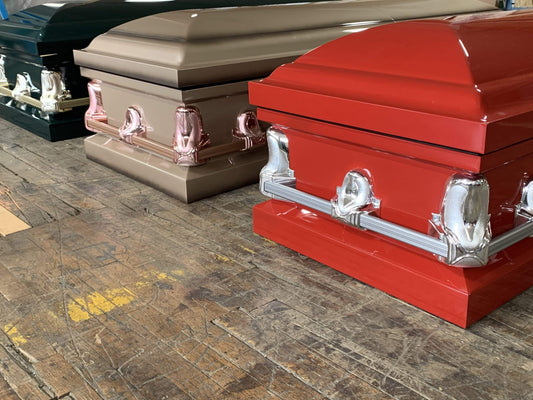The Official Requirements for a Coffin
While there are no official requirements for a coffin, there are a number of characteristics that define whether an item is a coffin or casket. Anyone looking to choose between a coffin or casket today will find themselves spoilt for choice. While they appear to be quite similar, there are a few key differences between a coffin and casket. A coffin has 6 sides, and is tapered according to the shape of the human form. It usually has a removable lid and handles on the side. A casket, on the other hand, has 4 sides and is rectangular in shape. Its lid is hinged and it has rails on either side so that it may be easily carried. Many families prefer caskets as they are easily customized and can be higher quality than coffins. Either option includes lining the wood or metal with cloth, and can include custom designs. When choosing between a coffin or casket, it is important to know whether there will be a cremation or burial, as well as the venue for the same so that you can take into account any tricky transport or logistics issues.
Types of Coffins
There are a wide variety of coffins that one can choose from. This choice must be made in accordance with the deceased’s religious views, spiritual beliefs or personal preferences.
- Traditional Coffins: Keep it simple with an understated wooden coffin that follows the traditional European style with its simple ornamentation. This is a classic option that ensures the ceremony is a somber and respectful affair.
- Cardboard Coffins: A seemingly bizarre choice, cardboard caskets have grown in popularity in recent years. With many being 100% biodegradable, it is seen as a more sustainable and thoughtful option. It can support a large amount of weight and can be easily transported. The development of technology allows custom designing of the coffin’s surface with photography or art.
- Bamboo Coffins: A bamboo coffin is an incredibly sturdy and unique choice. It is an excellent choice for environmentally conscious individuals, and can hold a large amount of weight. It is also a great idea if you’re looking for an unconventional element to the service and are keen on moving beyond traditional options.
- Woolen Coffins: If you’re looking for an exceedingly comfortable option, a woolen casket might be the one for you. Created from cardboard and then upholstered with a warm layer of wool, this casket is a cozy and minimalist choice that adds an intriguing textural element to the service.
How to Transport a Body In A Coffin?
Transporting a body via ground is a simple task, but requires prior preparation and an understanding of legislative guidelines. Commonly, funeral homes will charge a high fee to transfer remains to another funeral home, which will charge to receive the body. Many times, it is possible to transfer a body yourself across state lines, but this depends on the state’s relevant legislation. Many states requires to complete the process of embalming a body if it is being sent across state borders. When it comes to transporting a body via air, it is a bit more complicated. You will need a registered partner who can communicate with the airline and ensure transport. If the body is transported via plane, it will be placed in the cargo hold in a special container. This can be expensive, and people often find it easier to transport a body via car or train, or as cremated remains.
Honoring Tradition
There is no greater challenge than enduring the loss of a loved one. At such a time, nobody wants to be bothered by logistical kerfuffles and tedious planning. Loss can be sudden, which is why it is crucial to begin death-planning early. This process allows you to clarify any legal, financial or familial concerns and get your affairs in order. In addition, you can make all the necessary arrangements for your memorial, and ensure that your wishes are carried out. While this might seem like an upsetting process, it shows great kindness to your loved ones whose burden you can lessen by being prepared. In the case that the deceased did not plan, it is vital to consult their nearest and dearest to determine what their wishes might have been. Keep in mind their religious, spiritual and personal beliefs so that their service can accurately represent them. You might also consider a celebration of life event in order to bring some joy to the occasion and celebrate the deceased’s life instead of mourning their loss.

![Upgrade to Premium Weight [18-gauge steel]](http://titancasket.com/cdn/shop/products/casketthicknesswithnumbers.png?v=1680642906&width=533)



